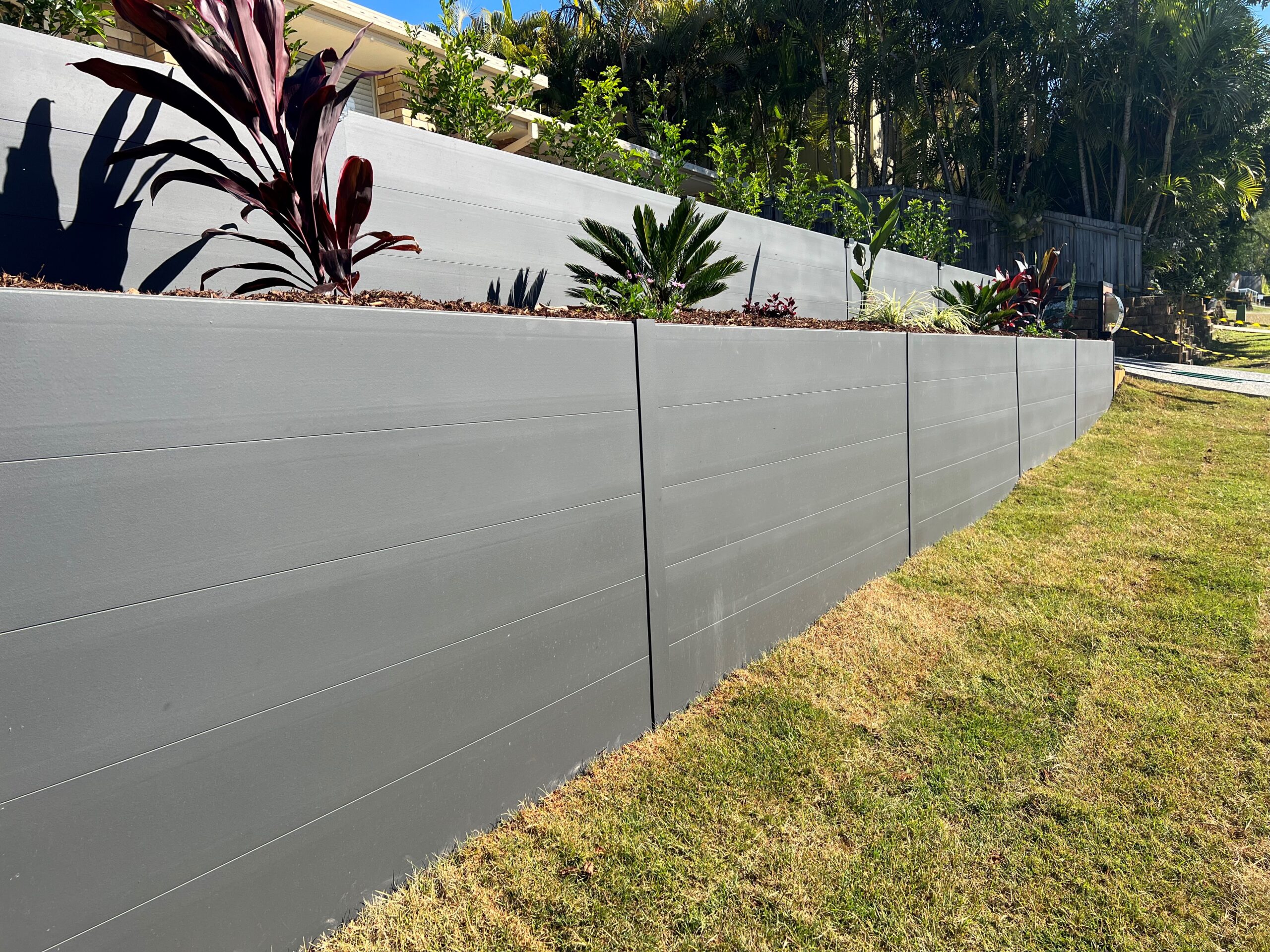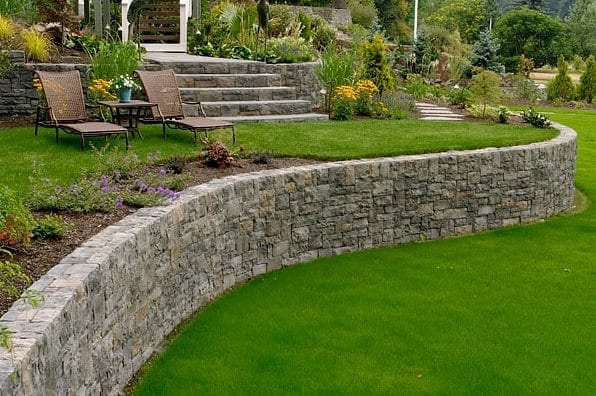Retaining Wall Surfaces Sunshine Coast: Ingenious Solutions for Erosion Control
Retaining Wall Surfaces Sunshine Coast: Ingenious Solutions for Erosion Control
Blog Article
Enhancing Residential Or Commercial Property Security: The Duty of Retaining Walls in Dirt Retention and Disintegration Control
Retaining wall surfaces stand as silent guardians, playing a vital duty in dirt retention and erosion control. By discovering the subtleties of different kinds, style considerations, building and construction methods, and maintenance pointers connected with retaining wall surfaces, a deeper understanding of their crucial function in boosting building security emerges.
Importance of Retaining Walls in Security
The significance of maintaining wall surfaces in guaranteeing security within landscapes can not be overstated. Keeping wall surfaces play an important duty in keeping back soil, protecting against erosion, and producing level surface areas in sloped locations. By offering architectural assistance, retaining walls assist to rearrange side pressure triggered by dirt, protecting against landslides and slippage. In addition to improving the visual allure of a home, preserving wall surfaces add to the overall security and performance of exterior rooms.
Keeping walls are especially vital in unequal or uneven terrains where soil disintegration is an usual event. Without ample assistance, dirt erosion can result in the degradation of landscapes, compromising the integrity of frameworks and posturing threats to occupants. Maintaining walls act as barriers, maintaining the dirt and avoiding it from shifting downhill during hefty rainfall or various other ecological stressors.
Additionally, retaining wall surfaces use long-lasting benefits by lowering upkeep costs related to dirt disintegration and land instability. By buying well-designed keeping wall surfaces, homeowner can ensure the durability and sustainability of their landscapes while promoting a aesthetically enticing and secure atmosphere.

Sorts Of Retaining Walls for Erosion Control
Generally used in landscaping and civil engineering tasks, various sorts of maintaining walls act as effective remedies for erosion control in varied terrain problems. Gravity keeping wall surfaces are strong structures that rely upon their weight to resist the pressure of the dirt behind them. They appropriate for reduced to medium elevation applications and are usually constructed from concrete or stone. Cantilever preserving walls, on the various other hand, are designed with a thicker base and use a bar arm to stand up to the soil pressure. These wall surfaces are commonly made use of in areas where area is limited.
For taller wall surfaces or where area is a restriction, anchored keeping walls are commonly utilized. When choosing the proper type of keeping wall for erosion control, factors such as soil make-up, wall surface elevation, and website problems need to be thoroughly thought about to guarantee long-lasting stability and performance.
Layout Factors To Consider for Soil Retention
The height and location of the keeping wall surface are vital variables that influence the total design. Engineers have to also consider the pressure put in by the preserved soil and prospective side lots to guarantee the framework's security over time.
Furthermore, the material option for the retaining wall is vital in boosting longevity and performance. Concrete, lumber, gabion baskets, and all-natural rock are common materials utilized in preserving wall surface construction, each with its special benefits and factors to consider. Correct drainage mechanisms, such as weep holes and French drains, ought to be incorporated right into the layout to stop water build-up behind the wall, which can result in structural failure and erosion.
Building Methods for Maintaining Wall Surfaces
When applying layout factors to consider for reliable dirt retention, the building and construction strategies for preserving wall surfaces play a crucial role in guaranteeing structural integrity and long-term security. The success of a retaining wall surface greatly relies on the building and construction techniques utilized. One typical technique is the gravity wall, which depends on the weight and mass of the wall surface itself to stand up to the pressure of the maintained dirt. Gravity walls appropriate for low to tool heights and are relatively easy to construct. Retaining Walls Sunshine Coast.
An additional extensively utilized construction strategy is the cantilevered wall, which makes use of a concrete slab structure that prolongs backwards right into the retained dirt. This design gives additional security and is appropriate for tool to high keeping wall surfaces. For taller structures, enhanced soil strategies such as making use of geogrids or dirt nails can be employed to improve the wall's stamina and security.

Maintenance Tips for Property Security
To guarantee lasting residential or commercial property stability, routine upkeep techniques are essential for protecting the stability of preserving wall surfaces and preventing disintegration problems. Evaluating retaining walls periodically is important to recognize any type of indicators of damages, find here such as fractures, bulging, or leaning. Any kind of problems should be attended to without delay to avoid more damage. Cleaning the surface of the preserving wall surfaces can also assist maintain their structural stability by eliminating dirt, debris, and greenery that could damage the wall in time (Retaining Walls Sunshine Coast).
In enhancement to visual examinations and cleansing, it is necessary to examine the drain systems associated with the preserving walls. Ensuring that drains pipes are clear of blockages and functioning effectively can avoid water build-up behind the walls, which can bring about pressure and possible failure. Effectively functioning water drainage systems are vital for taking care of water flow and minimizing the risk of erosion.
Routinely checking and maintaining maintaining wall surfaces according to these suggestions can prolong their lifespan and add to the general security of the residential property.
Conclusion
In verdict, preserving wall surfaces play a vital function in improving home stability by preventing dirt disintegration and maintaining soil in place. Normal upkeep of keeping walls is essential to make certain long-lasting stability and protection versus disintegration.
For taller walls or where space is a constraint, secured maintaining walls are usually used. These walls use wires or strips that are secured into the Look At This dirt or rock behind the wall surface to offer additional assistance. When selecting the ideal kind of retaining wall surface for disintegration control, aspects such as soil structure, wall elevation, and site problems should be carefully thought about to ensure durable stability and performance.
One common strategy is the gravity wall, which relies on the weight and mass of the wall itself to resist the stress of the retained soil. Cleaning up the surface area of the have a peek at this site keeping wall surfaces can also aid keep their structural honesty by removing dust, particles, and plants that can compromise the wall over time.
Report this page